How To Rank in the Local Organic Search Results
At DSG, we consistently reinforce the importance of accurate and complete Digital Business Information. One crucial reason for our focus on DBI is that it creates the foundation to effectively activate all online platforms and marketing campaigns.
This week our guest blog comes from our partners at Adplorer. In this thorough and highly actionable article they walk through the nuts and bolts of local organic search and how you can win on Google.
Ranking in the organic search results locally through local SEO is the best way to get in front of users. About 34% of clicks go to the first organic search result, so getting your business in the top 3 spots can result in a lot of traffic to your website. Most local businesses don’t have a chance ranking for important search terms for their business nationally, but any local business can grab the top spots for searches Google identifies as having local intent (i.e. “near me,” “in Atlanta,” etc.).
You don’t need to know everything about Search Engine Optimization (SEO) and the nitty-gritty details of algorithm updates to be successful in implementing local SEO on your website. Let’s take a look at the basic concepts of Organic SEO through the lens of local marketing.
What Are Organic Search Results?
Organic search results are the meat of the Google Search Engine Results Page (SERP). They are Google’s primary answer to a search engine user’s query in the form of millions of web pages which they proudly deliver to you in only 0.53 seconds.
Let’s look at the SERP for the example search “How much arm strength do rock climbers need?”
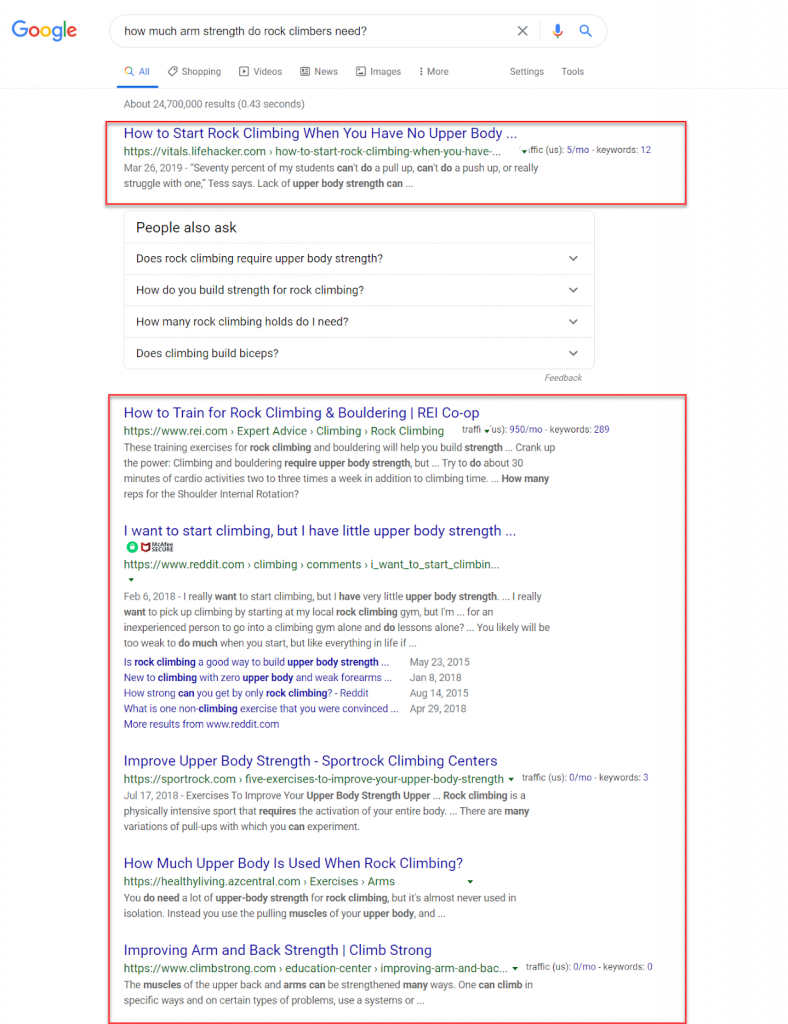
Google perceives my search intent as being “Search to Research.” The search engine did not show me any ads, but they did try to provide concise answers to my question in the “People Also Ask” section.
The majority of the SERP for “how much arm strength do rock climbers need?” is dominated by organic search results, which are web pages that google shows in order of what it perceives to be the best answer to my query. Different types of search intents will yield a different mixture of SERP features, but since we are focused on the organic search results this a great example to illustrate how the search engine answers a search query with different webpages. If you are a local rock-climbing gym and you want to focus on capturing new rock climbers to increase traffic to your gym, this is a search query you may want to focus on answering.
Google (thanks to BERT’s advanced language analysis) understands by the way that I’m asking the question that I am probably not already an expert rock climber, and determine that the best answer to my question is the lifehacker.com article titled “How to Start Rock Climbing When You Have No Upper Body Strength.” Trying not to be offended by the Google Algorithm, I move on to the next result, REI’s “How to Train for Rock Climbing & Bouldering.” The rest of the top results follow this same pattern and appear in an order based on a myriad of search ranking factors outside of my specific search intent.
In terms of local marketing when REI shows up for this result and is the only website that could possibly offer me rock climbing gear or an excursion to climb locally, they automatically earn my trust as a consumer as an authority on rock climbing.
So What Do You Need to Do If You Want to Rank at the Top of Google?
- Research Keywords That Are Important to Your Business Locally
The key piece of any SEO performance is to identify and rank well for search terms that your customers are typing into Google to find businesses that offer your products and services.
SEO keyword research is very different from Pay Per Click (PPC) keyword research, and local SEO keyword research is very different from national SEO keyword research. As a local business, you must identify what words people in your area use to describe your business. For local you need to find a happy medium between keywords with a high organic search volume (use a 3rd party tool like Moz or SEMrush to identify this) and keywords that don’t require a ton of effort to rank for.
For example, if I run a yoga studio out of my Atlanta rock climbing gym, I may want to rank for the local intent keyword “yoga near me” (this gets 301,000 national monthly searches on average). Unfortunately, North Atlanta is the Mecca of yoga studios so I have quite a bit of competition:
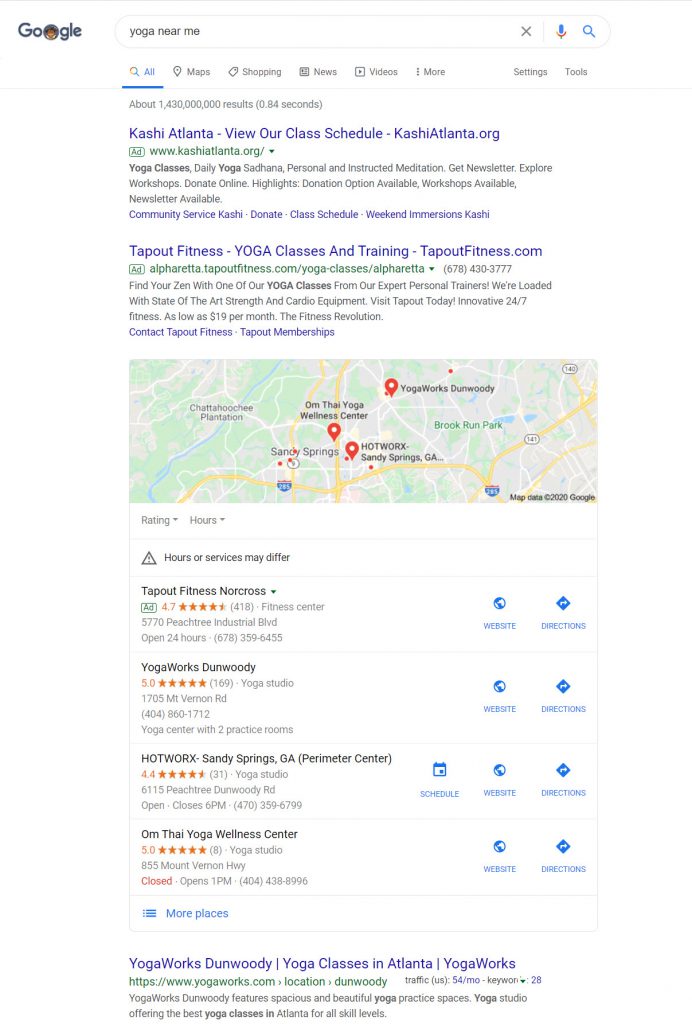
As a rock-climbing gym, Google knows that Yoga is not my core product, so it will be pretty difficult for me to rank for this term against bonafide yoga studios. A proximity factor could help when someone just happens to be closest to my gym than one of these yoga studios but looking at the map above this seems unlikely.
A better local SEO search term to focus on might be “yoga for strength” (this has 1,900 average searches nationally but substantially less completion). This search term will be less trouble to rank for and better speaks to the customer base you are likely to capture (people who are interested in rock climbing).
Start by identifying a list of 20 or so of these types of keywords and get to work.
- Produce Quality Content Related To These Keywords
Without content on your website that speaks to your target keywords, you will never rank highly for these types of search terms on Google. The keyword we identified above “yoga for strength” could also be great material for a blog or other content on your website.
The best thing that you can do to boost your SEO is to have lots of high-quality content on your website that talks about and provides your customer with information related to your products and services.

Moz’s Local Search Ranking Factors study in 2018 found the primary attributes of a business’s online presence that result in a website ranking high organically for search queries important to their business based on how the algorithm exists today.
Moz found that the number one ranking factor is having many qualities, diverse backlinks pointing toward your website from websites Google recognizes as an authority on subjects relating to your business, services, or products.
The second most important ranking factor, On-Page Signals (which primarily includes this content piece), presents a little bit of a chicken and egg situation. The primary driver of external backlinks pointing to your website is quality content on your website that people want to share and engage with, and without backlinks, no one will see the content that you create and be able to link to your website. Working together Link Signals and On-Page Signals make up nearly 54% of all ranking factors.
In the case of “yoga for strength” I might write a blog article that describes the yoga poses rock climbers should be doing every day to improve their rock-climbing technique, and I would write a section of my yoga services and pricing pages that speaks specifically to “yoga for strength.” The process of creating quality content that includes your focus keywords takes a lot of effort but has the largest pay off in the long term.
- Easy to Navigate Website
Website Structure
One fundamental way to help your local SEO is to structure your website in a way that makes sense and is easy for your customers to navigate. Having a logical page structure makes it easy for both users and Google to understand how topics on your website are related. Google will make connections with your pages and users’ search queries to determine whether they show up on the SERP.
A good website structure will have pages that go at least 2-3 levels deep (Home page -> Category Page -> Specific Product or Service Page) and less than 5 levels deep (anything more than this is confusing). Each page will have links to other pages that help users navigate laterally through your website, from category -> category or product ->product, and links that help you navigate vertically up and down each level, from category->product or product -> category.
For example, Little Rock climbing below has a URL structure that makes sense and is easy to navigate. Their structure can be easily observed in their header menu:
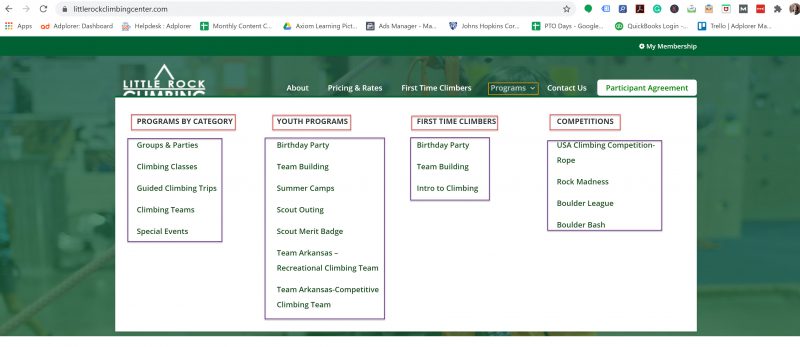
After clicking into the “Groups & Parties” category page there are blurbs about each specific service under the “Groups & Parties” category (birthday parties, youth groups, etc.) with links to each service page to navigate vertically up and down the structure. On the sidebar, you can also navigate laterally into other categories or sub-laterally into other services that relate to “Groups & Parties.”
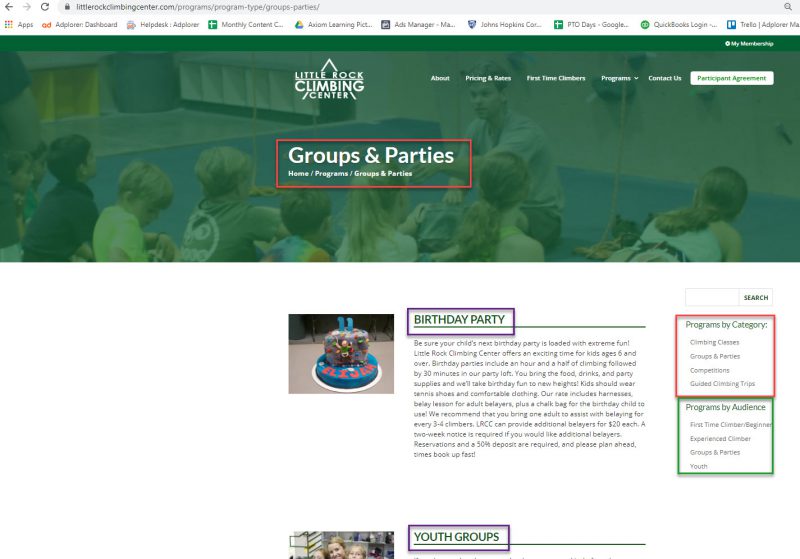
Website Graphic Design
Although website design is not technically an organic ranking factor, it is worth mentioning as we talk about website features that impact SEO. Having a well-thought-out brand presence and cohesive images and graphics are key to selling customers once they organically click to your business website. From dynamic retail sites to interactive restaurant experiences, consumers are used to interacting with flashy sites as they navigate the internet. Your customers will be quick to weed out your business in favor of a more polished consumer site.
In terms of SEO, this website design aspect is more about keeping customers on your website once you have won their organic click. There are a few things you can focus on with your website graphic design that can directly affect how you show up on Google:
- Edit all of the metadata on high-quality on your images with its page’s focus keywords, according to systeme.io you want to keep this simple and straightforward as possible
- Utilize infographics to explain complicated topics – if marked up correctly these can rank on Google Images for their topics
- Create and link PDFs on case studies, blogs, manuals, etc. on your websites. These have the potential to rank as an organic search result.
If you need help coming up with a brand design and images there are plenty of online Graphics Creator available to help you create logos and other marketing materials to design a beautiful website on your own with just a little bit of effort.
- Utilize Your Google Business Profile
Google Business Profile (formerly Google My Business) is one of your most powerful local marketing tools and it’s completely free. With SEO especially you have to start thinking of Google as your homepage. As the 4th most important ranking factor, being active on Google Business Profile not only helps you rank well in the Local Pack and Google Maps, it actually improves your organic website rankings.
Use the keywords that you identify as being important to your website local SEO on your GBP. Use these words to describe your business, products, and services in your posts, events, business description, product descriptions, literally anywhere you can.
For many of our customers, their Google Business Profile drives more traffic than any other medium (GBP makes up 50% of one our lab testing customers website traffic?!). Giving GBP proper attention will impact other important SEO signals like behavioral signals, review signals, and social signals and all it costs is your time.
- Clickable Title Tags & Meta Descriptions for Top Pages
Title tags and meta descriptions may be the most undervalued tool SEOs can use to improve their rankings. Many marketers simply think of them as a box to check on the path to having perfect on-page signals, but meta descriptions and title tags are key to driving traffic to your website.
It’s a given that you need to include your target keywords for each webpage in your meta description and title tag, but doing it in a way that actually interests users to click on the organic result is the challenge. Asking questions is a great way to do this. Backlinko found that on average title tags that contain a question have a 14.1% higher organic click-through rate (CTR) than titles without questions.
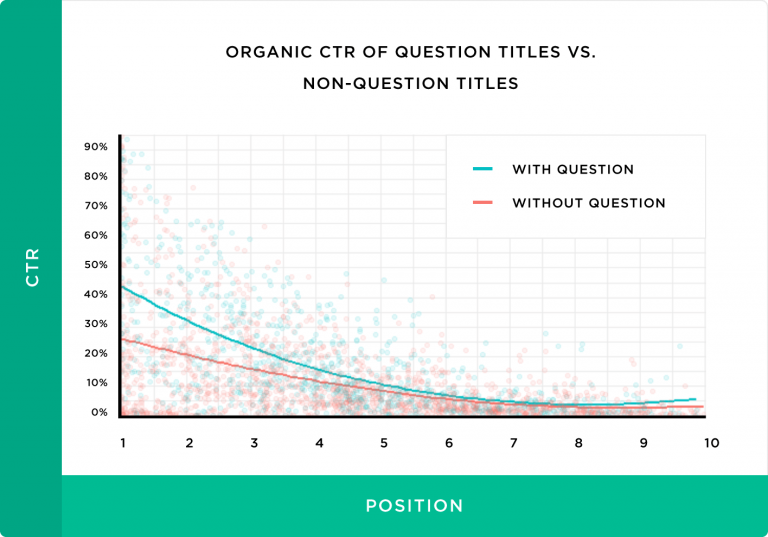
Using a question can indicate to users that you have the answer and will result in increased trust. There is a lot of data on what types of title tags and meta descriptions perform best, with a little bit of research you can write titles that pull clicks away from other organic listings that might even rank higher on the SERP. Treat your meta descriptions and title tags the same way a PPC campaign manager treats their ad copy.
- Invest in Local PR
Local PR is a tough sell to local digital marketers. We don’t want to dip our toes into the pool of the unknown. We want to focus on churning out perfect content and cross our fingers that customers stumble upon it. Local PR is the best way to reach your target audiences in your borough, town, or region.
Want a link on a .org, .edu or .gov website? Sponsor a local philanthropy or school event. Want to find more climbers from the local university? Write an article for their school newsletter. Network with local bloggers and influencers. Contact your local news station about being featured on a segment related to your location or business, they’ll often post the segment online and link to your website.
Find a niche in your area that can reach your target audience and figure out how you can be featured in their material. This will help you gather backlinks and present a great brand message to the people who will actually become your customers.
Conclusion
Investing in Local SEO can be one of the best long-term investments you can make in local marketing. It takes time and patience to rank well on Google for important keywords, but once you do, you’ll sweep the majority of the SERP’s traffic for search terms related to your business
Take time thinking about and implementing these local SEO strategies into your existing digital marketing mix. We promise the payoff will be well worth the effort.
This post was written by our partners at Adplorer


